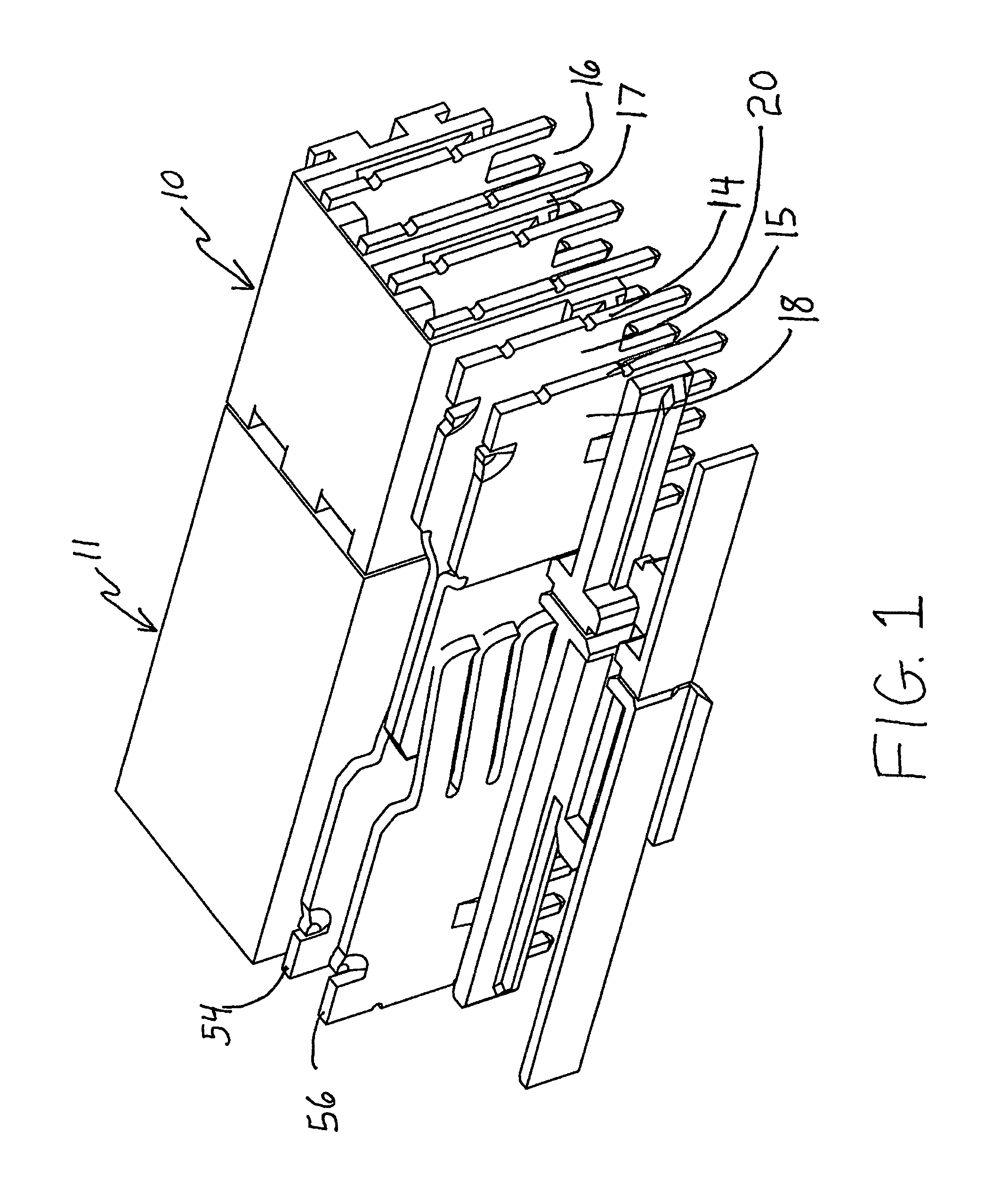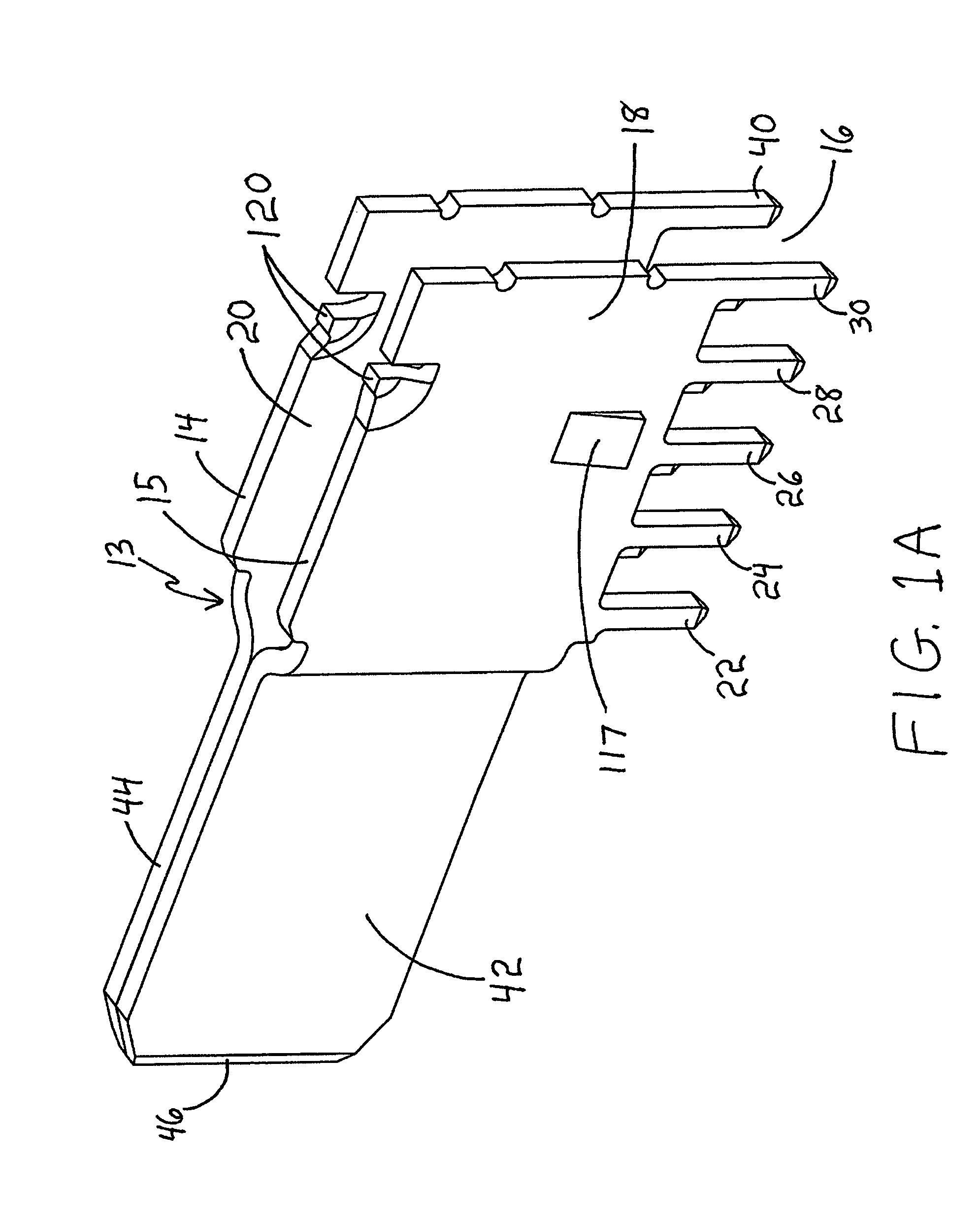Low profile modular electrical connectors and systems
a modular, electrical connector technology, applied in the direction of coupling device connection, electrical discharge lamp, coupling device details, etc., can solve the problems of loosened contacts or other metal components such as connector screws, adversely affecting electrical characteristics, and negative effects of joule effect, so as to improve air flow, improve electrical characteristics, and reduce the effect of joule
- Summary
- Abstract
- Description
- Claims
- Application Information
AI Technical Summary
Benefits of technology
Problems solved by technology
Method used
Image
Examples
Embodiment Construction
[0038]As required, detailed embodiments of the present invention are disclosed herein; however, it is to be understood that the disclosed embodiments are merely exemplary of the invention, which may be embodied in various forms. Therefore, specific details disclosed herein are not to be interpreted as limiting, but merely as a basis for the claims and as a representative basis for teaching one skilled in the art to variously employ the present invention in virtually any appropriate manner.
[0039]FIG. 1 illustrates a plug connector, generally designated at 10, and a receptacle connector, generally designated at 11. These are suitable for use as power connector components. The term power connector is meant to encompass AC power connectors and / or DC power connectors. The plug connector 10 illustrated in FIG. 1 includes a contact, generally designated at 13, comprising a pair of mechanically uncoupled contact members, generally designated at 14 and 15. The contact 13 is held in place by ...
PUM
 Login to View More
Login to View More Abstract
Description
Claims
Application Information
 Login to View More
Login to View More - R&D
- Intellectual Property
- Life Sciences
- Materials
- Tech Scout
- Unparalleled Data Quality
- Higher Quality Content
- 60% Fewer Hallucinations
Browse by: Latest US Patents, China's latest patents, Technical Efficacy Thesaurus, Application Domain, Technology Topic, Popular Technical Reports.
© 2025 PatSnap. All rights reserved.Legal|Privacy policy|Modern Slavery Act Transparency Statement|Sitemap|About US| Contact US: help@patsnap.com



